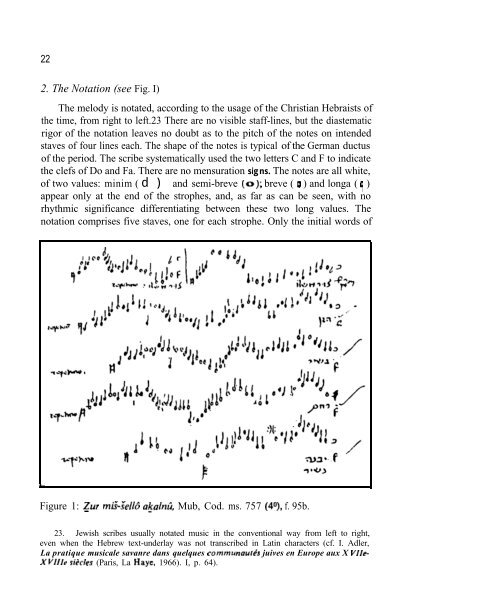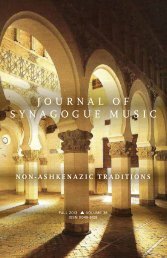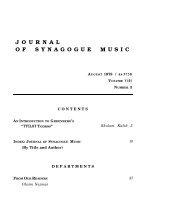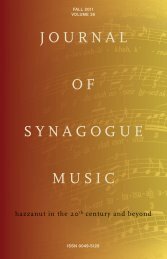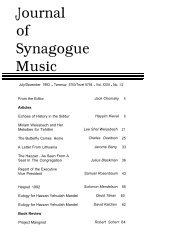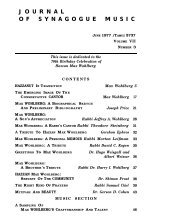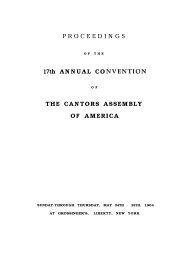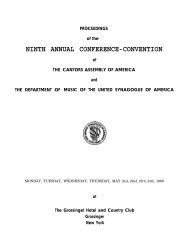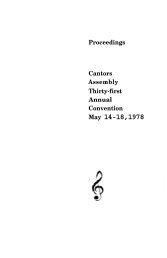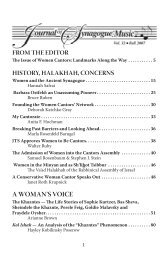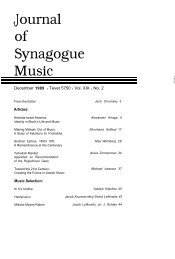Volume 16, Number 2 - Cantors Assembly
Volume 16, Number 2 - Cantors Assembly
Volume 16, Number 2 - Cantors Assembly
Create successful ePaper yourself
Turn your PDF publications into a flip-book with our unique Google optimized e-Paper software.
22<br />
2. The Notation (see Fig. I)<br />
The melody is notated, according to the usage of the Christian Hebraists of<br />
the time, from right to left.23 There are no visible staff-lines, but the diastematic<br />
rigor of the notation leaves no doubt as to the pitch of the notes on intended<br />
staves of four lines each. The shape of the notes is typical of the German ductus<br />
of the period. The scribe systematically used the two letters C and F to indicate<br />
the clefs of Do and Fa. There are no mensuration signs. The notes are all white,<br />
of two values: minim ( d ) and semi-breve (0); breve ( o ) and longa ( 9 )<br />
appear only at the end of the strophes, and, as far as can be seen, with no<br />
rhythmic significance differentiating between these two long values. The<br />
notation comprises five staves, one for each strophe. Only the initial words of<br />
L<br />
Figure 1: &N rn&~elkj a&al&, Mub, Cod. ms. 757 (4O), f. 95b.<br />
23. Jewish scribes usually notated music in the conventional way from left to right,<br />
even when the Hebrew text-underlay was not transcribed in Latin characters (cf. I. Adler,<br />
La pratique musicale savanre dans quelques communaulh juives en Europe aux X Vlle-<br />
XVII/e sikles (Paris, La Haye, 1966). I, p. 64).


